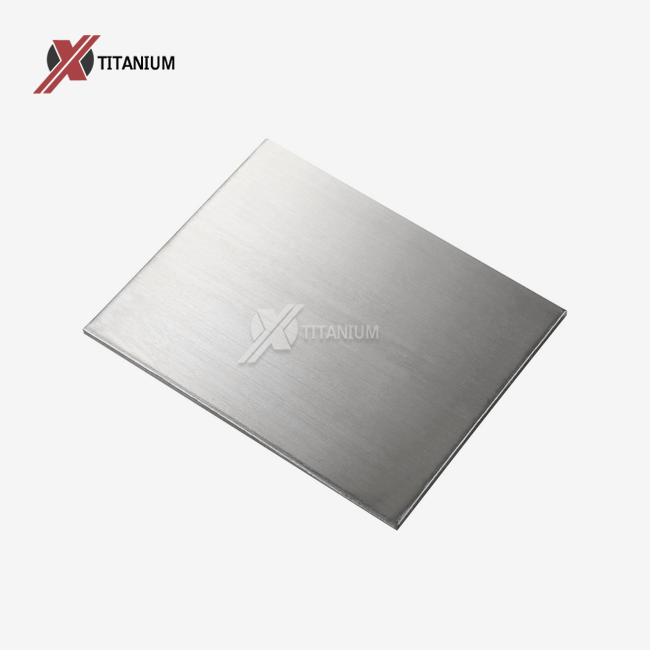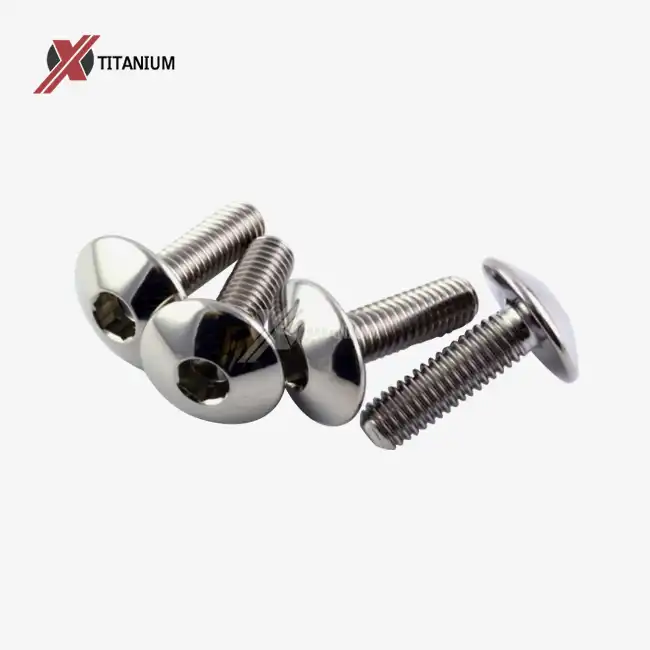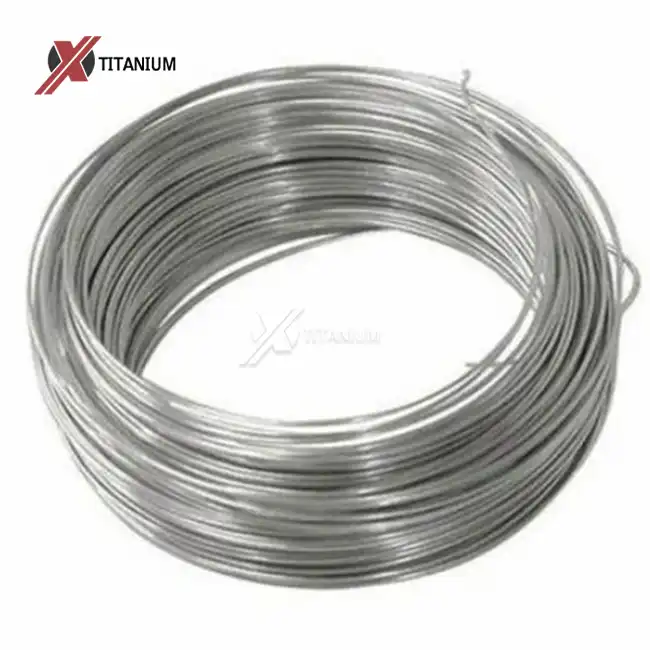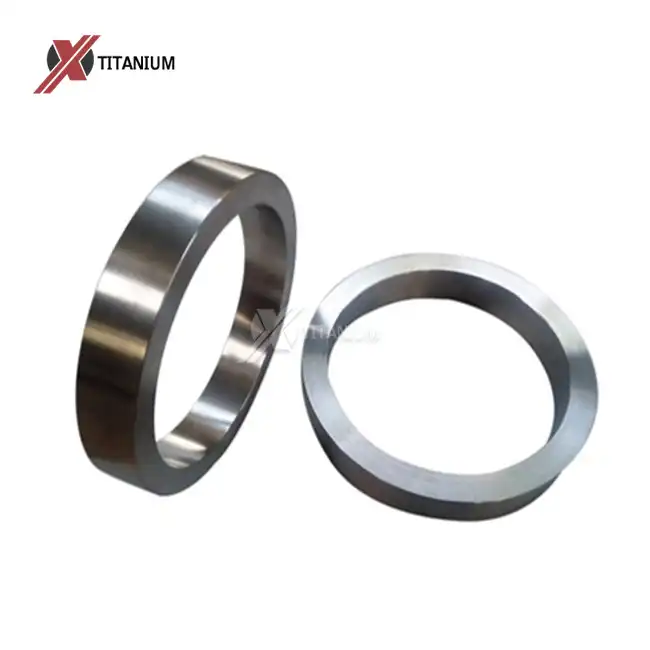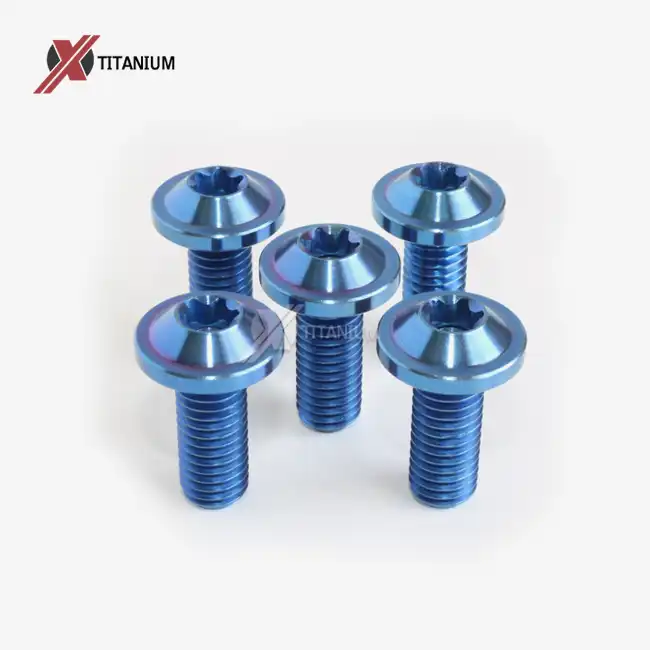The Unique Properties of Titanium Alloy Plates in Aerospace Applications
Titanium alloy plates possess a remarkable set of characteristics that make them indispensable in aerospace engineering. Their high strength-to-weight ratio is particularly crucial in this field, where every gram counts. Aerospace-grade titanium alloys, such as Ti-6Al-4V (Grade 5), offer tensile strengths of up to 900 MPa while maintaining a density of only 4.43 g/cm³. This allows engineers to design lighter aircraft components without sacrificing structural integrity.
The corrosion resistance of titanium alloy plates is another game-changing property. In the harsh environments encountered during flight, including exposure to various atmospheric conditions and chemicals, titanium alloys form a protective oxide layer that prevents further corrosion. This self-healing capability ensures longevity and reduces maintenance requirements for aircraft components.
Furthermore, titanium alloy plates exhibit excellent thermal stability. They maintain their mechanical properties across a wide range of temperatures, from the extreme cold of high altitudes to the heat generated by engine exhaust. This thermal resilience makes titanium alloys ideal for use in critical areas such as engine components and exhaust systems.
Customization and Versatility
The versatility of titanium alloy plates allows for customization to meet specific aerospace requirements. Manufacturers can adjust the composition and processing of these alloys to enhance particular properties. For instance, some titanium alloys are optimized for high-temperature performance, while others are tailored for superior fatigue resistance. This adaptability enables aerospace engineers to select the most suitable titanium alloy plate for each application, whether it's for the fuselage, wings, or engine components.
Revolutionizing Aircraft Design and Performance
The integration of titanium alloy plates into aircraft design has revolutionized aerospace engineering in several key areas. One of the most significant impacts is weight reduction. By replacing heavier materials like steel with titanium alloys, engineers have dramatically decreased the overall weight of aircraft. This weight reduction translates directly into improved fuel efficiency, increased range, and higher payload capacity.
In modern commercial aircraft, titanium alloy plates are extensively used in the fuselage, wing structures, and landing gear components. The Boeing 787 Dreamliner, for example, incorporates about 15% titanium by weight, a significant increase from previous models. This extensive use of titanium alloys has contributed to the aircraft's 20% improvement in fuel efficiency compared to its predecessors.
Beyond commercial aviation, titanium alloy plates have enabled the development of advanced military aircraft. Stealth technology, crucial for modern combat aircraft, relies heavily on titanium alloys. The unique properties of these materials allow for the creation of complex geometries that reduce radar cross-section while maintaining structural integrity under extreme conditions.
Advancements in Supersonic and Hypersonic Travel
The revolution brought about by titanium alloy plates extends to the realm of supersonic and hypersonic travel. As aircraft push the boundaries of speed, they encounter extreme temperatures due to aerodynamic heating. Titanium alloys, with their high strength retention at elevated temperatures, are crucial for the development of these next-generation aircraft. The retired Concorde supersonic airliner, for instance, relied heavily on titanium alloys to withstand the heat generated during supersonic flight.
In the emerging field of hypersonic flight, where aircraft travel at speeds exceeding Mach 5, titanium alloy plates play an even more critical role. These materials are essential for creating structures that can withstand the intense heat and stress associated with hypersonic speeds, paving the way for revolutionary advancements in both civilian and military aerospace applications.
Sustainable Aerospace Engineering with Titanium Alloy Plates
The use of titanium alloy plates in aerospace engineering aligns with the industry's growing focus on sustainability. The longevity and corrosion resistance of these materials contribute to extended aircraft lifespans, reducing the need for frequent replacements and thereby conserving resources. Additionally, the weight reduction achieved through the use of titanium alloys directly translates to lower fuel consumption and reduced carbon emissions over the lifecycle of an aircraft.
Moreover, titanium is a highly recyclable material. At the end of an aircraft's life, titanium components can be recycled and repurposed, further enhancing the sustainability of aerospace manufacturing. This recyclability, combined with titanium's abundance in the Earth's crust, ensures a more sustainable future for the aerospace industry.
Innovations in Manufacturing Processes
The revolution in aerospace engineering is not limited to the properties of titanium alloy plates themselves but extends to their manufacturing processes. Advancements in additive manufacturing, also known as 3D printing, have opened up new possibilities for creating complex titanium components. This technology allows for the production of intricate, lightweight structures that were previously impossible or prohibitively expensive to manufacture using traditional methods.
Cold spray technology is another innovative process that's gaining traction in aerospace manufacturing. This technique allows for the deposition of titanium alloys onto existing structures, enabling repairs and modifications without compromising the integrity of the original component. Such advancements in manufacturing processes are further enhancing the versatility and applicability of titanium alloy plates in aerospace engineering.
Conclusion
Titanium alloy plates have undeniably revolutionized aerospace engineering, ushering in an era of lighter, stronger, and more efficient aircraft. Their unique combination of high strength, low weight, corrosion resistance, and thermal stability has enabled engineers to push the boundaries of aircraft design and performance. From commercial airliners to supersonic jets and space vehicles, titanium alloys have become an indispensable material in the aerospace industry. As we look to the future, the continued development of titanium alloys and their manufacturing processes promises even greater advancements in aerospace technology, paving the way for more sustainable, faster, and safer air travel.
Are you interested in harnessing the power of titanium alloy plates for your aerospace projects? At Baoji Chuanglian New Metal Material Co., Ltd., we specialize in manufacturing high-quality titanium products tailored to the exacting standards of the aerospace industry. With over a decade of experience in titanium manufacturing, we offer customized solutions to meet your specific needs. Contact us today at info@cltifastener.com or djy6580@aliyun.com to learn how our titanium alloy plates can revolutionize your aerospace engineering projects.
FAQ
What makes titanium alloy plates ideal for aerospace applications?
Titanium alloy plates offer an exceptional combination of high strength-to-weight ratio, corrosion resistance, and thermal stability, making them perfect for aerospace use.
How do titanium alloy plates contribute to aircraft fuel efficiency?
By reducing overall aircraft weight, titanium alloy plates help improve fuel efficiency, leading to lower operating costs and reduced emissions.
Are titanium alloy plates suitable for all parts of an aircraft?
While not used for every component, titanium alloy plates are extensively used in critical areas such as the fuselage, wings, and engine components.
How do titanium alloy plates impact the lifespan of aircraft?
The corrosion resistance and durability of titanium alloy plates contribute to extended aircraft lifespans, reducing maintenance needs and replacement frequency.
References
1. Boyer, R. R. (1996). An overview on the use of titanium in the aerospace industry. Materials Science and Engineering: A, 213(1-2), 103-114.
2. Peters, M., Kumpfert, J., Ward, C. H., & Leyens, C. (2003). Titanium alloys for aerospace applications. Advanced Engineering Materials, 5(6), 419-427.
3. Banerjee, D., & Williams, J. C. (2013). Perspectives on titanium science and technology. Acta Materialia, 61(3), 844-879.
4. Veiga, C., Davim, J. P., & Loureiro, A. J. R. (2012). Properties and applications of titanium alloys: A brief review. Reviews on Advanced Materials Science, 32(2), 133-148.
5. Inagaki, I., Takechi, T., Shirai, Y., & Ariyasu, N. (2014). Application and features of titanium for the aerospace industry. Nippon Steel & Sumitomo Metal Technical Report, 106, 22-27.
